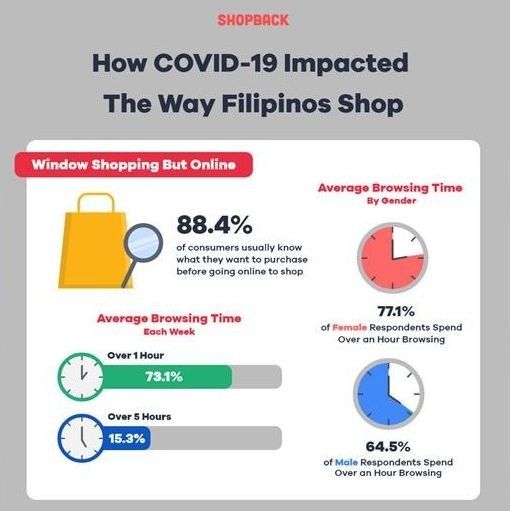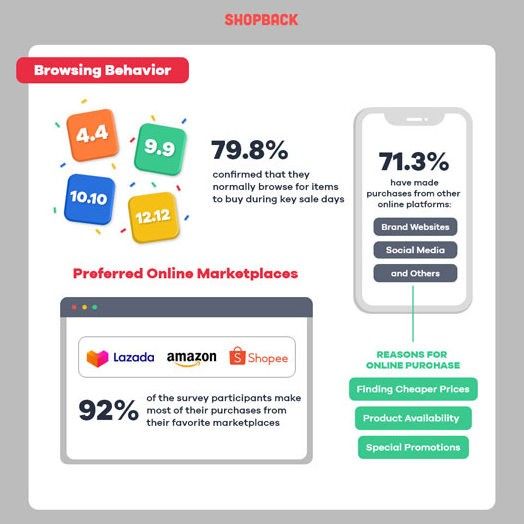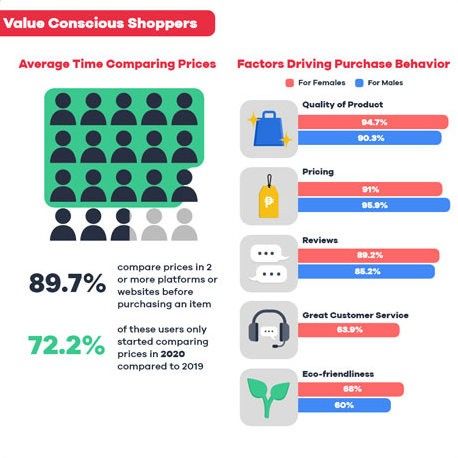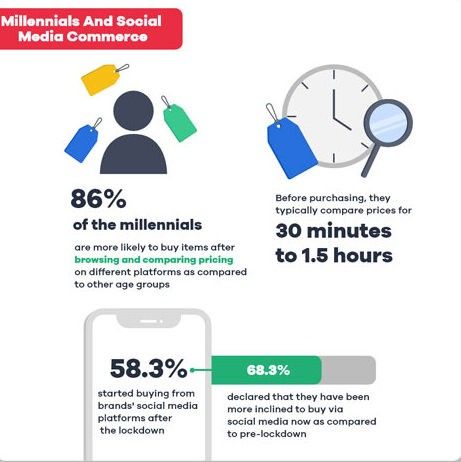New study shows how pandemic affects Filipino shopping habits

MANILA, Philippines — It's the mid-year already and people have just been treated to whopping mega sales. They did not have to queue in the mall, though. All they have to do is sit back at home and click "add to cart."
If there's a positive that arose during this pandemic, it's the fact that more people are welcoming of the transition to e-commerce.
This is not an assumption but was proven true in a commissioned survey by pre-shopping portal ShopBack. The April 2020 Digital Statshot report of We Social and Hootsuite found that 64% of Filipino Internet users reported spending more time on social media, while 23% of users shared that they are spending more time shopping online.


ShopBack shared that there has been a significant increase in the number of consumers shifting to buying retail and essential goods online.
Here are some of the telling results of the survey:
1. Window shopping... but online.
It used to be a joke whenever one goes out to go to the mall. Part of the Filipino malling culture has been to visit boutiques that they fancy without necessarily buying from the store.
With the boom of e-commerce, they do not have to leave home. They'll just have to open their browser or their favorite shopping app.
The survey revealed that 88.4% of consumers usually know what they want to purchase before going online to shop. Even then, the majority seem to still enjoy browsing on e-commerce websites and marketplaces, as 73.8% of respondents spend an average of over an hour browsing each week, while 15.3% of respondents spend more than five hours a week browsing different products.
Interestingly, women appear to spend more time browsing when online shopping, with 77.1% clocking in more than an hour, compared to 64% of men.
Furthermore, major sales have an impact on browsing behavior. The study found that 79.8% of respondents tend to spend more time browsing online during major sales days such as the recently concluded 7.7.
Consumers tend to stick to their usual shopping platform, but are platform-agnostic when lower prices or specific products come into play. Around 92% of respondents indicated that they make most of their online purchases on marketplaces such as Shopee, Lazada, Amazon, etc. - the top reasons for this are that products are cheaper, convenient payment methods and user-friendly platforms.
Another 71.3% have made purchases from other online websites, such as directly from brand.coms, last year, for reasons such as finding better discounts, wider product selection and exclusive brand promotions.
Since more and more Filipinos become savvy e-commerce consumers, they are also becoming more value-conscious, but not at the expense of product quality. In fact, 89.7% of respondents compare prices of an item across different websites and marketplaces prior to making a purchase.

2. Expect more value-conscious shoppers.
Yes, they may be fond of window-shopping but more Filipinos know their money's worth.
The survey also found that 72.3% of the consumers spend more time comparing prices now, compared to last year. On average, shoppers spend around 50 minutes comparing prices, with 14% indicating that they take more than 90 minutes choosing in between products and website platforms.
Interestingly, the main factors that influence purchase behavior vary between females and males. For women, the main factors that drive purchase behavior are the quality of the product (94.7%), pricing (91%) and good reviews (89.2%). Notably, good customer service is also important to Filipino women, with 63.9% listing it as a key factor that influences their purchase decision.
In contrast, for men, the main factors that drive purchase behavior are pricing (95.9%), the quality of the product (90.3%) and good reviews (85.2%).

3. Millennials are key drivers of e-commerce.
They comprise 86% of those who spend more time researching and looking at different options before deciding on the best product available for them as compared to the older age groups.
Participants were also split when asked if they bought products directly from a brand’s social media platform, with 58.3% indicating they have done so, with the remaining saying they have not yet bought from a social media platform.
Among the participants who tried purchasing via the brand’s social media platform, 68.3% declared that they have been more inclined to buy via social media now as compared to pre-lockdown.
“The survey findings have shown us how e-commerce acceptance has grown tremendously over the past year. With Filipino shoppers discovering the conveniences and benefits of online shopping, we expect continuous growth in the Philippines, and along with it, the rise of digital payment solutions. All these will, no doubt, enhance and steadily upgrade Filipinos’ online shopping experience,” concluded Prashant Kala, ShopBack Philippines Country Manager.



















